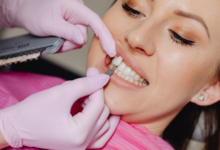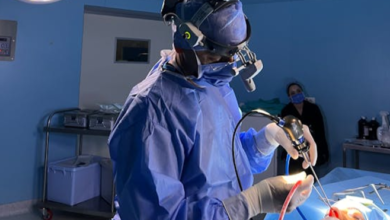Is Gynecomastia in Dubai the Answer to a Flatter, More Confident Chest?

Overview If you have enlarged male breasts, you are not alone. Gynecomastia is common and can affect teens and adults. It often shows as puffy nipples, extra gland tissue, or a fuller chest that does not respond to diet or workouts. The good news is that treatment is effective and discreet. Dubai is a popular place for gynecomastia surgery thanks to skilled surgeons, modern facilities, and recovery plans that fit busy schedules.
What Gynecomastia Really Is
- True gynecomastia: Extra glandular breast tissue caused by hormone imbalance or sensitivity. Often feels firm or rubbery under the nipple.
- Pseudogynecomastia: Extra fat in the chest, usually linked to weight gain. Tissue feels softer.
- Mixed type: A combination of gland and fat, which is very common.
Common Causes to Consider
- Puberty or aging shifts in hormones
- Certain medications or supplements
- Anabolic steroids or prohormones
- Alcohol, marijuana, or recreational drugs
- Thyroid, liver, or testicular conditions A proper medical evaluation rules out underlying issues and guides the best plan.
Who Is a Good Candidate
- You have persistent chest fullness for 12 months or longer
- Your weight is stable, and you are close to a healthy BMI
- You do not smoke or can pause nicotine for several weeks around surgery
- Your expectations are realistic about contour, scars, and recovery
- You want long-term improvement that looks natural in and out of clothes
Treatment Options Explained
- Lifestyle and medical management: If caused by a drug or hormone issue, addressing the root cause may help. Weight loss can reduce fat but will not remove firm gland tissue.
- Liposuction: Removes excess fat through tiny incisions. Good for pseudogynecomastia or mixed cases.
- Gland excision: Removes firm gland tissue through a small incision at the edge of the areola. Often combined with lipo for best contour.
- Skin tightening: In significant skin laxity, energy devices or a limited lift may be considered to prevent sagging. Your plan is customized based on tissue type, skin quality, and goals.
How the Procedure Works
- Anesthesia: Usually general anesthesia or deep sedation for comfort.
- Incisions: Tiny lipo ports on the side of the chest and a small semicircle at the areola edge if gland excision is needed.
- Contouring: Liposuction shapes the chest; the surgeon excises gland tissue to flatten and smooth the nipple area.
- Closure and compression: Small sutures close the incisions. A compression vest is placed to control swelling and support healing.
What Recovery Really Looks Like
- Days 1 to 3: Soreness and swelling are normal. Keep your compression vest on and walk short distances.
- Days 4 to 7: Discomfort eases. Return to desk work is common if pain is controlled.
- Weeks 2 to 3: Bruising fades. Light cardio can resume if cleared by your surgeon.
- Weeks 4 to 6: Most swelling settles. You can usually restart weight training, avoiding direct chest strain until cleared.
- Months 3 to 6: Skin tightens and final contour becomes clear.
Tips for a Smooth Recovery
- Wear your compression vest day and night as directed
- Sleep on your back with your upper body slightly elevated
- Avoid heavy lifting and chest workouts until you are cleared
- Follow incision care instructions to keep scars flat and faint
- Stay hydrated and maintain stable weight for best definition
Expected Results and Longevity Results are generally permanent once gland tissue is removed. Fat cells taken by liposuction do not come back, but weight gain can enlarge remaining fat cells. Keeping a steady weight and avoiding hormones or substances that can trigger gland growth help maintain your new contour.
Potential Risks to Know
- Bruising, swelling, or temporary numbness
- Contour irregularities or asymmetry
- Fluid build-up that may need drainage
- Noticeable scarring if aftercare is not followed
- Rare issues: infection, changes in nipple sensation, or skin laxity requiring a lift Choosing an experienced surgeon and following instructions closely reduces these risks.
Why Many Patients Choose Dubai
- High-volume surgeons with focused gynecomastia expertise
- Modern operating theaters with strong safety standards
- Access to advanced liposuction tools and energy-assisted devices
- Clear aftercare pathways for local and international patients
- Discreet services and efficient scheduling
How to Choose the Right Surgeon
- Review before-and-after photos of cases similar to your body type
- Ask whether your case needs liposuction, gland excision, or both
- Confirm incision placement, compression protocol, and return-to-gym timeline
- Discuss scar care, risk of loose skin, and strategies to avoid “cratering”
- Make sure communication is direct, clear, and aligned with your goals
Cost Snapshot Pricing varies with complexity, whether both lipo and excision are needed, anesthesia, and facility fees. A personal consultation will provide an exact plan, recovery timeline, and quote tailored to your chest and goals.
Alternatives if You Are Not Ready for Surgery
- Targeted weight loss and strength training can improve overall shape, especially for pseudogynecomastia
- Medical review to adjust medications or hormones when appropriate
- Body contouring garments for temporary compression under clothing
Next Steps If you are considering gynecomastia in dubai, schedule a consultation to examine tissue type, skin quality, and your fitness habits. Bring your workout routine and medication list. The aim is a chest that looks natural at rest and flexed.
Bottom Line Gynecomastia treatment can give you a flatter, more athletic chest and boost confidence in everyday clothes and at the gym. With the right plan, a skilled surgeon, and solid aftercare, results are natural, stable, and long lasting.






